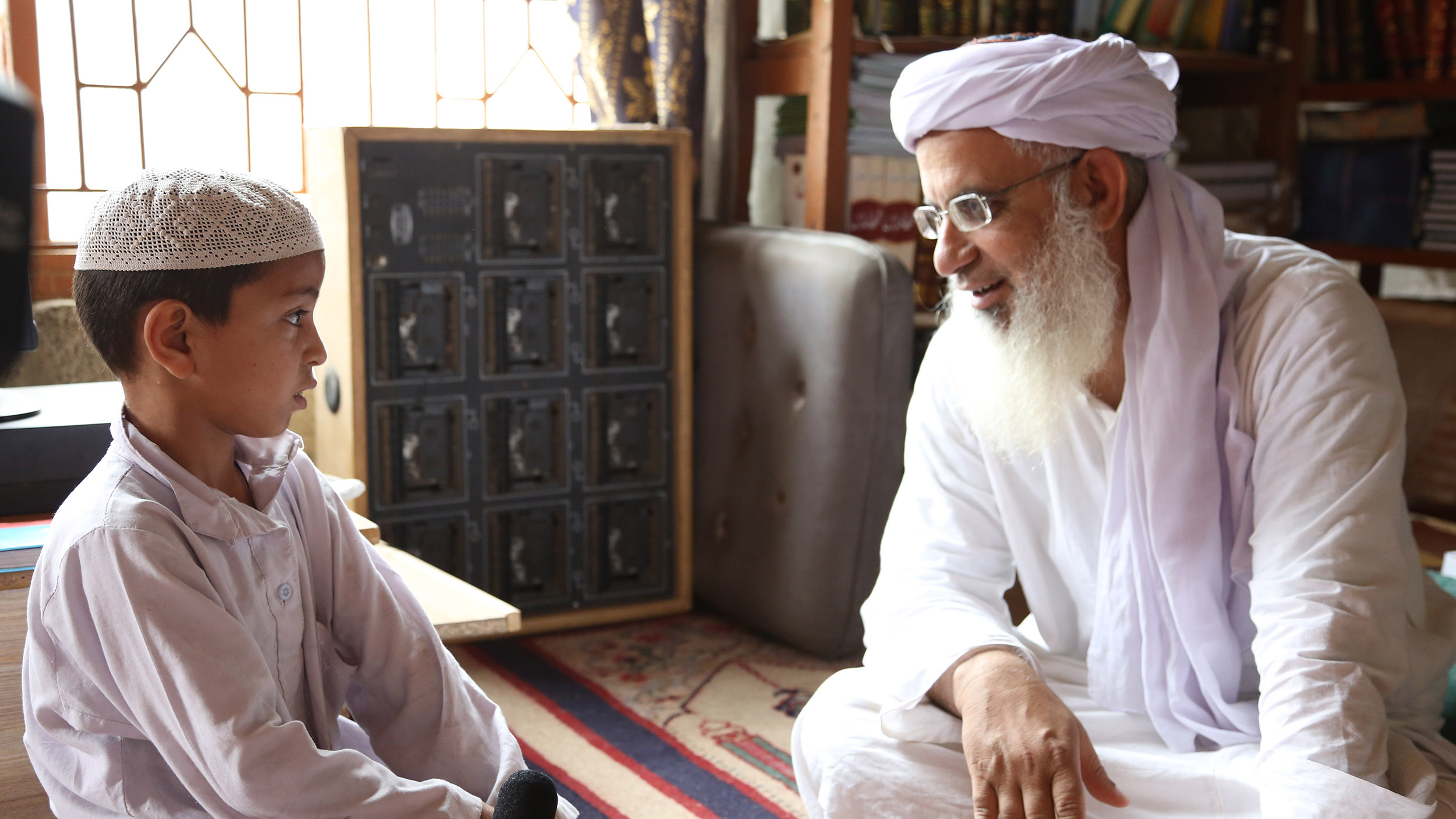EMILY WALDRON reviews ‘Among the Believers’, a disturbing documentary about the religious indoctrination of children within extremist madrasa in Pakistan.
Among the Believers is a documentary film about the growing religious tensions in Pakistan as well as the absolute strength of extremist conviction, seen through the rise of radical religious seminaries for children. The film not only documents the world within the Red Mosque seminaries – the one in Islamabad is referred to as “the heart of militancy in the heart of Pakistan” – but also the consequences of its increasing presence in the country. Before 2007, Pakistan possessed around 6000 of these seminaries or madrasa, but these numbers have since grown to a massive 35,000. The film charts the growing ideological tensions produced by these seminaries across the generations, accompanied by a consistent but accelerating drumbeat that governs the film’s soundtrack.
The documentary flourishes is in its subtle counterpointing of the village school with the Red Mosque. In the Red Mosque, children are forced to memorise the Quran for over ten hours a day, breaking only for meals and prayer. When asked by the interviewer what part of the text means, twelve-year-old student Tahla replies that their class does not learn the meaning, solely the chants. By contrast, in the village schools we witness a hands-on approach to learning, where the pupils are taught science and reading, amongst other more conventional subjects.
These students appear happier than their Red Mosque counterparts who are not allowed to play, or even watch television, as they are under constant threat of being beaten. A particularly heart-breaking scene is where the children from the seminaries talk about their love of cricket and their favourite cricket stars – something they have to conceal from their elders. A credits sequence shows the children at the village school playing cricket and laughing. It is a stark reminder that even if they are under threat, the children in the village schools are at least free.

The extreme differences between these two modes of education underlines the hypocrisy of leading cleric Abdul Aziz. While he talks often of his jihadis bringing peace in Pakistan through Sharia law, the documentary allows for us to see the real, shocking outcome through newsreels. The omnipresence of guards with machine guns and the violent sermons taught to children as young as six in the madrases belie his constant preaching as to the good of the jihadi movement.
However, we should not take this instance of Islamic extremism as an exception. Among the Believers is similar in many ways to the 2006 American documentary Jesus Camp, which looked at elements of extremist Christianity. Like Abdul Aziz in Among the Believers, Becky Fischer, the Pentecostal children’s pastor, remarks that children are used because they are more “malleable”. Chanting and militaristic rituals are common in the evangelical Christian community run by Fischer, as they are in these jihadi seminaries. The difference lies in the end result of the ‘education’: while Becky Fischer instills a dangerous combination of nationalism and violence in the children she teachers, the Red Mosque not only teaches violence but actually implements it. The Red Mosque Facebook page contains pictures of dead jihadis from the seminary who “die every few days”.
While the documentary tries to sustain a well-balanced tone, the pre-emptive bias of the viewer is difficult to shake, and this may be the greatest disservice to the documentary’s success. There may also be an unconscious bias due to the camerawork itself: the scenes within the Red Mosque tend to be shakier, while the camera seems to be handled more cautiously, with the framing confined rather than open. This is a stark contrast to the scenes in the village school which, while still handheld, seem to demonstrate a cooperation with the children and teachers in the school.

The soundtrack, the clever weaving of past and present, and the film’s carefully chosen frames allow Among the Believers to support its gargantuan weight of responsibility. The only issue here is that outside influences clouds its attempts at an unbiased documentary voice, even though a neutral point of view is admittedly hard to entertain in front of such subjects. The documentary is an exercise in restraint before megalomania and tragedy – and that is undoubtably where its value lies.
‘Among the Believers’ is showing at the DocHouse until Thursday 17th March. Tickets are available here.





